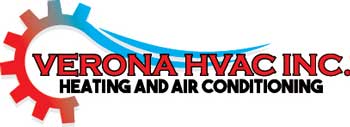
You shouldn’t need to give up comfort or empty your wallet to keep your home at the right temp during summer weather.
But what is the best setting, exactly? We discuss recommendations from energy pros so you can find the best temp for your family.
Here’s what we recommend for the most energy-efficient setting for air conditioning in Santa Clarita.
Recommended Thermostat Settings for Summer
Most people find placing the thermostat at 72-73 degrees provides ideal comfort. However, if there’s a major difference between your interior and exterior warmth, your electricity costs will be greater.
These are our recommendations based on the U.S. Department of Energy (DOE) and ENERGY STAR®.
While at home: 78 degrees. While that seems hot, there are ways you can keep your residence pleasant without having the AC on constantly.
Keeping windows and curtains shut during the day keeps cool air where it belongs—indoors. Some window solutions, such as honeycomb shades or plantation shutters, are created to provide added insulation and better energy efficiency.
If you have ceiling fans in your residence, the DOE says you can move thermostat temperatures about 4 degrees higher without sacrificing comfort. That’s since they freshen by a windchill effect. Because they cool people, not areas, turn them off when you leave a room.
If 78 degrees still seems too uncomfortable on the surface, try running an experiment for a week or so. Get started by increasing your temperature to 78 degrees while you’re at your residence. Then, gradually decrease it while using the tips above. You could be surprised at how cool you feel at a higher temperature setting.
While away: 88 degrees. There’s no reason to keep the air conditioner working all day while your house is empty. Moving the setting 7–10 degrees higher can save you as much as 5–15% on your electricity bills, according to the DOE.
When you arrive home, don’t be tempted to set your thermostat colder than 78 to cool your home more rapidly. This isn’t effective and typically results in a more expensive cooling bill.
A programmable thermostat is a good way to keep your temp under control, but you need to set programs. If you don’t use programs, you might forget to increase the set temperature when you leave.
If you’re looking for a hassle-free fix, think over getting a smart thermostat. This thermostat connects with your phone, so it is aware when you’re at your house and when you’re gone. Then it intuitively changes temperature settings for maximum savings. How much exactly? An estimated $180 yearly on heating and cooling, according to ENERGY STAR.
Another plus of having a smart thermostat? You can use your phone to watch and adjust temperature settings from almost anywhere.
While sleeping: Around 70 degrees. While ENERGY STAR advises 82 degrees, that might be too uncomfortable for many families. Most people sleep better when their bedroom is chilly, so that’s why the National Sleep Foundation recommends 60–67 degrees. But that could be too chilly, based on your pajama and blanket preference.
We suggest following a similar test over a week, moving your temp higher and progressively decreasing it to choose the ideal temperature for your residence. On mild nights, you might find keeping windows open at night and using a ceiling fan is a preferable idea than operating the AC.
More Methods to Use Less Energy During Hot Weather
There are added methods you can conserve money on energy bills throughout the summer.
- Buy an energy-efficient AC system. Central air conditioners only are effective for about 12–15 years and become less efficient as they age. A new air conditioner can keep your residence cooler while keeping electrical bills down.
- Set regular air conditioner maintenance. Regular air conditioner maintenance keeps your unit operating properly and might help it operate at greater efficiency. It might also help extend its life span, since it enables techs to discover seemingly insignificant troubles before they lead to a major meltdown.
- Switch air filters often. Follow manufacturer instructions for replacing your air filter. A dusty filter can result in your system short cycling, or turn on and off too often, and drive up your energy.
- Measure attic insulation levels. Nearly 90% of homes in the U.S. don’t have adequate insulation, according to the Insulation Institute. Many southern climates should have 13–14” of attic insulation, while northern climates should have 16–18”.
- Have your ductwork examined. Ductwork that has come apart over time can let conditioned air into your attic, walls or crawl space. This can lead to big comfort troubles in your home, including hot and cold spots.
- Seal holes, doors and windows. Keep warm air where it belongs by sealing holes. You can also caulk or weather strip doors to keep more cold air indoors.
Conserve More Energy During Hot Weather with Verona HVAC
If you want to save more energy during hot weather, our Verona HVAC pros can assist you. Give us a call at 818-306-3387 or contact us online for extra info about our energy-saving cooling solutions.
